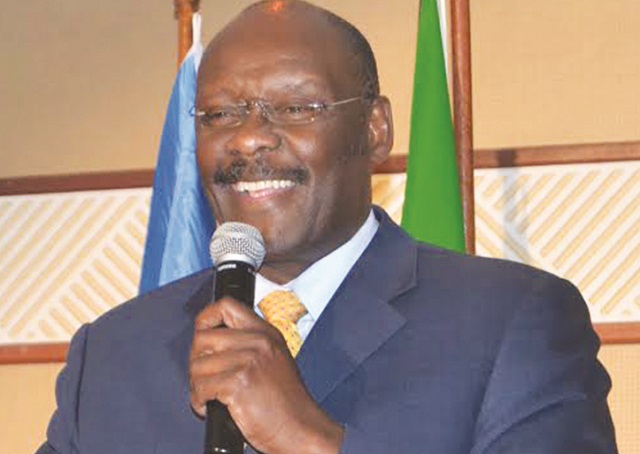FDCs bring fresh hope for TB eradication

WHEN six-year old Sithandekile Sibanda from How Mine, a gold mining township 30 kilometres south-east of Bulawayo, fell ill with a cough, weight loss and fever for more than 21 days, her parents suspected witchcraft.
Mr Thulani Sibanda took his daughter to a local traditional healer where she was given traditional herbs for drinking and some to burn in her bedroom at night. The underprivileged family was made to pay the healer two goats for the service.
But Sithandekile’s health problem persisted and she became increasingly frail by the day. The Sibanda family tried all they could including consulting a Pentecostal church prophet, and one of the many white garment apostolic churches in the area, all to no avail.
Sithandekile remained frail until her aunt decided to take her to a pharmacy in Bulawayo. As she never liked food, the aunt was looking for vitamin supplements to boost her appetite.
The supplements failed to work prompting her referral, by the pharmacist, to a doctor with experience in paediatric tuberculosis (TB). The doctor at a medical centre in Bulawayo ordered the Xpert MTB/RIF test on her, which confirmed pulmonary TB.
She was put on TB treatment but the tablets she was given were unpalatable and numerous. Sithandekile was given a combination of four drugs — isoniazid, rifampicin, ethambutol and pyrazinamide — daily for two months, followed by four months of isoniazid and rifampicin given three times a week.
“I had to force her to take all the four drugs and she never liked them at all because she said they were bitter. Sometimes I would mix the drugs with some juice or milk in a bid to get her to take the medication but sometimes she would throw-up,” said Mr Sibanda.
Unpalatable medicines ultimately impact negatively on their effectiveness, treatment adherence and outcomes. These factors fuel the development of drug-resistant TB.
Before the advent of the new child-friendly drug formulations, many children with TB did not complete their treatment because they were forced to take copious quantities of unpalatable medicines every day.
But come 2017, a soluble and child-friendly formulation of the three major drugs used to treat TB became available in Zimbabwe. This was after the World Health Organisation (WHO) and the Global Alliance for TB Drug Development (TB Alliance), with support from UNITAID and USAID, launched child-friendly fixed-dose combinations (FDCs) for the treatment of drug-susceptible tuberculosis (TB) in children.
“The improved child friendly formulations are flavoured-fixed dose combinations of three major TB drugs, rifampicin, isoniazid, and pyrazinamide,making them more palatable compared to the previous line of medicines.
It is important to note that fixed dose combinations are not new drugs, but rather flavoured formulations of presently used medicines recommended by WHO for the first line treatment of TB,” said Dr Charles Sandy, Director, HIV/Aids and TB programme in the Ministry of Health and Child Care.
Mpilo Central Hospital’s TB focal person, Ms Nokuthula Nkomo, revealed that the FDCs reduced the pill burden for TB patients, since their introduction 10 years ago.
“Fixed Dose Combination has really helped TB patients to comply with treatment by reducing the pill burden on patients. Before their introduction, even children would take as much as seven tablets at once. Can you imagine making a child swallow seven pills at one go as a health care worker?
“Let’s say the child is an orphan who doesn’t have a guardian; making sure that they have taken the pills becomes a real challenge,” said Ms Nkomo.
WHO Communications and Technical Officer Policy, Strategy and Innovations Global TB Programme, Mrs Hannah Monica Yesudian-Dias revealed that the incidence of childhood TB were highest in the WHO African region, although the WHO Asian region had the highest absolute numbers due to population size. She said children represented 10 to 15 percent of all reported TB cases.
“In childhood TB, we need to face three major facts; that most children with TB are not diagnosed; that a lot of children do die of TB and that those who die would have never had the opportunity to access treatment or preventive therapy.
“In the African region, in 2016, only 74 348 children under five years received preventive treatment (16 percent of the 460 000 who were eligible),” said Mrs Yesudian-Dias.
She said TB in children could be treated and most children responded to treatment very well if they were given proper and consistent doses.
The 2017 Global TB report shows that in Africa a total of 102 000 children under 15 years of age died of TB in 2016 alone. This figure includes 32 000 HIV negative boys; 27 000 HIV negative girls; 23 000 boys who were HIV positive; and 20 000 girls who were HIV positive.
Officials in Zimbabwe have declared that the country is on course towards ending TB within the Sustainable Development Goals (SDGs) framework by 2030.
Minister of Health and Child Care Dr David Parirenyatwa said Zimbabwe has made great strides in combating TB, revealing that estimated TB incidence declined to 208 per 100 000 in 2016 as compared to a peak of 617 per 100 000 in 2003 and a rate of 242 per 100 000 in 2015.
Out of the 28 225 cases diagnosed in 2015, 81 percent were successfully treated, and this has remained the same rate compared to 2014 versus the target of 90 percent.
Zimbabwe successfully conducted a drug resistance survey in 2015-2016 which showed that the burden of Drug Resistant TB is 4.2 percent and 14.2 percent among new and retreatment cases respectively. There is an apparent upsurge of drug-resistant TB (DR-TB) mainly due to an improvement in access to diagnosis. In 2010 there were 40 cases notified against 586 for 2016. It is anticipated that as more DR-TB cases are detected and treated, a decline in the incidence of this severe form of TB will also begin to be noticed.
According to the International Union Against Tuberculosis and Lung Disease’s (The Union) country director in Zimbabwe, Dr Christopher Zishiri, there has been a rapid scale-up of new diagnostic technologies such as the Xpert MTB/Rif Assay, Line Probe Assay and Digital Radiology, resulting in prompt diagnosis and treatment of TB and Drug Resistant TB.
“The Union with support from USAID Challenge TB, has promoted access to quicker diagnosis of drug resistant TB through contributing to deployment of Gene Xpert machines across the country. We continue to bring TB services to the door step of the most vulnerable, through mobile X-ray trucks, with dedicated staff in partnership with Family Aids and Caring Trust,” said Dr Zishiri.
The Union says there is need for the Government to carry out tuberculosis awareness programmes as most people are not aware that they are living with the disease.
Dr Zishiri said the TB prevalence rate, especially in border towns, remained worrisome because of migrants and returning residents who may be infected and may have not been treated.











Comments